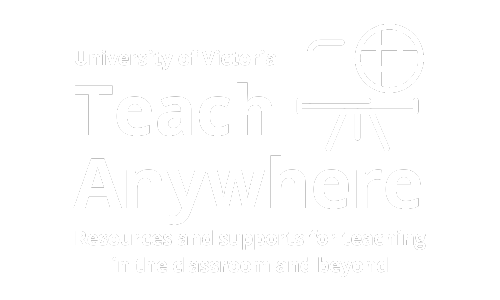Overview
In order to accurately have accessible and universal design, it is crucial to measure impact of UDL practices. We do this by monitoring progress, recognizing areas of proficiency and areas for improvement, and strategically addressing specific needs to foster growth and development.
Ways to assess impact
Assessing the impact of inclusive and accessible course design is allows you to evaluate the effectiveness of your teaching strategies and can identify areas where adjustments may be needed to better support diverse learners. Below are some examples on how to assess accessible and inclusive course design.
Student feedback
This can be achieved through informal assessments like class reflections, as well as more formal methods such as surveys, focus groups and individual interviews.
Learning outcomes
This can be done by comparing performance before and after implementing design changes to determine the impact on learning, assessing whether students are meeting the intended goals set for them and analyzing assessment grades to gauge individual and overall performance.
Accessibility metrics
There are some useful accessibility tools built into Microsoft Office programs and through websites that can get a sense of whether your course materials are able to be accessed and utilized by all of your students.
Student success and retention
You can evaluate student success from a UDL perspective by reviewing your attendance before and after. You will not know completely whether a higher attendance is due to higher engagement, but you can also take a look at engagement through course materials by providing check in reflections and if there is an increased completion of assessments.
Peer review and instructional feedback
Peer review can be a valuable tool in that it allows another instructor to evaluate your performance as an instructor, especially if you have already had a review that you can compare it to. Please see our learning guide on peer evaluation of teaching for more details.
We also offer small group instructional feedback, which helps provide formative feedback and learn from each other.
Exercise: questions to consider
Take a look at your current course structure. How would you currently answer the following?
- How does your course use content, instructional methods and peer interaction to keep students involved in their learning?
- Are your course goals and learning outcomes clearly articulated and listed for students to understanding learning objectives?
- Do assessments in your course effectively gather evidence of student achievement of learning outcomes?
- How do the learning activities in your course prepare students for success?
- In what areas does your course have potential for improvement using the framework of UDL?
Further resources
LTSI is available to support you in training for UDL through consultations and upcoming interactive sessions. We can tailor workshops and training to your department. Contact us for more details.
Supporting Research
Visit CAST, for a complete list of digital downloads, including thumbnails at https://udlguidelines.cast.org/more/downloads
Teaching Award
We have recently launched the Award for Inclusive and Innovative Course Design, celebrating innovative approaches to teaching that promote inclusion through the use of technology, digital pedagogies and principles of Universal Design for Learning (UDL). Recipients of this award demonstrate a significant impact on student engagement and academic success, as well as broadening research and experiential components in the learning environment.




